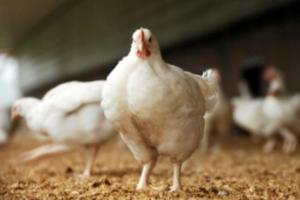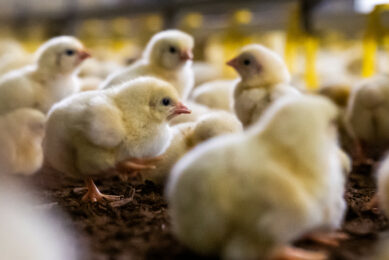Feeding organic acids with phytase promising

Concurrent supplementation of phytase and organic acids in broiler diets can be beneficial. This was shown in a study done with broilers.
The poultry industry is currently facing several challenges, including the environmental impact of poultry production, bird health and immunity, and the safety of poultry products. This experiment, carried out by an Iranian research group, was conducted to evaluate the effect of phytase supplementation and organic acids (alone or in combination) on growth performance, nutrient digestibility, tibia ash, immunity, and gut morphology of male broiler chickens (Ross 308).
The birds were allocated to 5 dietary treatments: (1) positive control diet (PC) with adequate amount of available phosphorus (4.9 and 4.4 g/kg in the starter and grower period, respectively); (2) negative control diet (NC) with a low amount of available phosphorus (3.9 and 3.4 g/kg in the starter and grower period, respectively); (3) NC plus 0.2% of a commercial organic acid (Salkil; Sal); (4) NC plus 500 phytase unit/kg diet (Phy); (5) NC plus Salkil and phytase (Sal+Phy). Each treatment had 5 pen replicates of 20 birds. The starter (0–14 d) and grower (15–28 d) maize–soybean meal based diets were fed ad libitum in mash form.
The results showed that overall, birds fed the Phy+Sal diet and birds fed the NC diet had the highest and lowest (P<0.001) live weight gain (50.80 g bird d vs 39.68), feed intake (74.78 g bird d vs. 64.69) and feed conversion ratio (1.47 vs. 1.63), respectively. broilers fed the nc diet had the lowest crude protein and ether extract digestibility (0.7751 and 0.7949, respectively), which were improved (p><0.001 and p="0.010," respectively) by the addition of phy (0.8506 and 0.8645, respectively) or phy+sal (0.8858 and 0.8561, respectively) to the nc diet. tibia ash was improved (p><0.001) in sal-fed broilers (374.3 g kg) compared with nc (341.6 g kg), but it was still lower than other treatments (pc, phy and phy+sal). addition of phy or phy+sal to the nc diet improved villus height and villus height crypt depth ratio in the duodenum, jejunum and ileum of broilers compared with broilers fed the pc diet. broilers fed phy+sal showed higher (p><0.001) igg (2.27) in the primary and also higher (p><0.001) total ig (7.84) and igg (5.74) in the secondary response compared with all other treatments.>
In conclusion, concurrent supplementation of phytase and organic acids improve productive performance, bone mineralization, intestinal integrity, and immune response of broilers fed diets low in available phosphorous.
This study has been published in the November 2013 issue of the journal ‘Livestock Science’.











